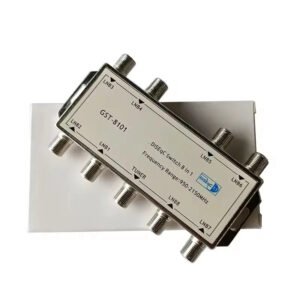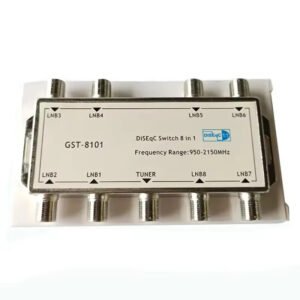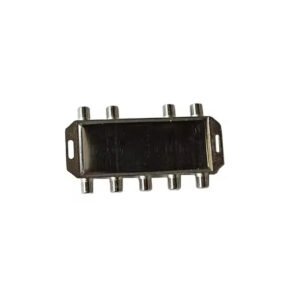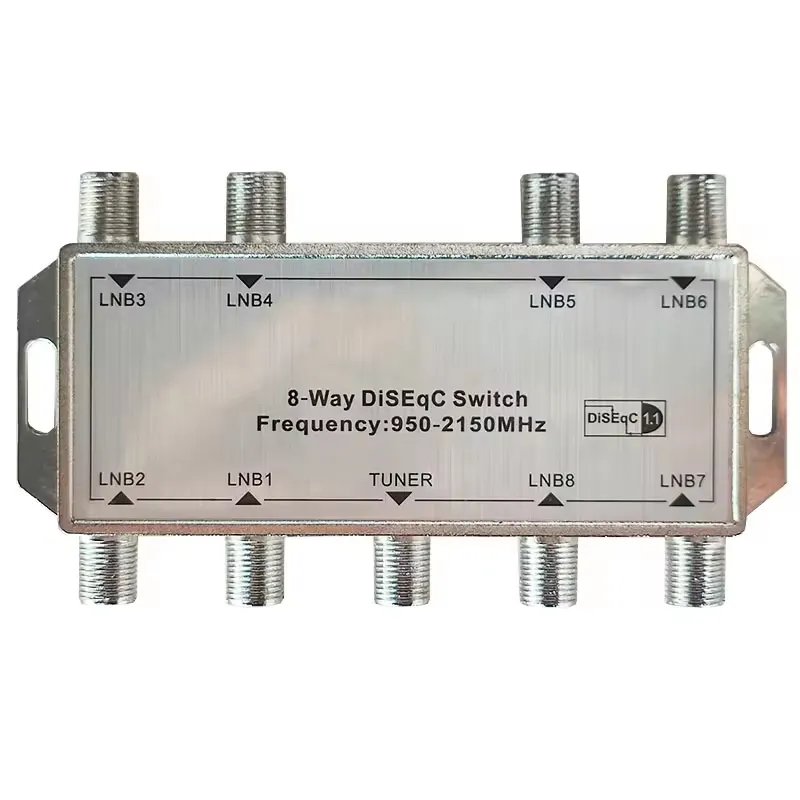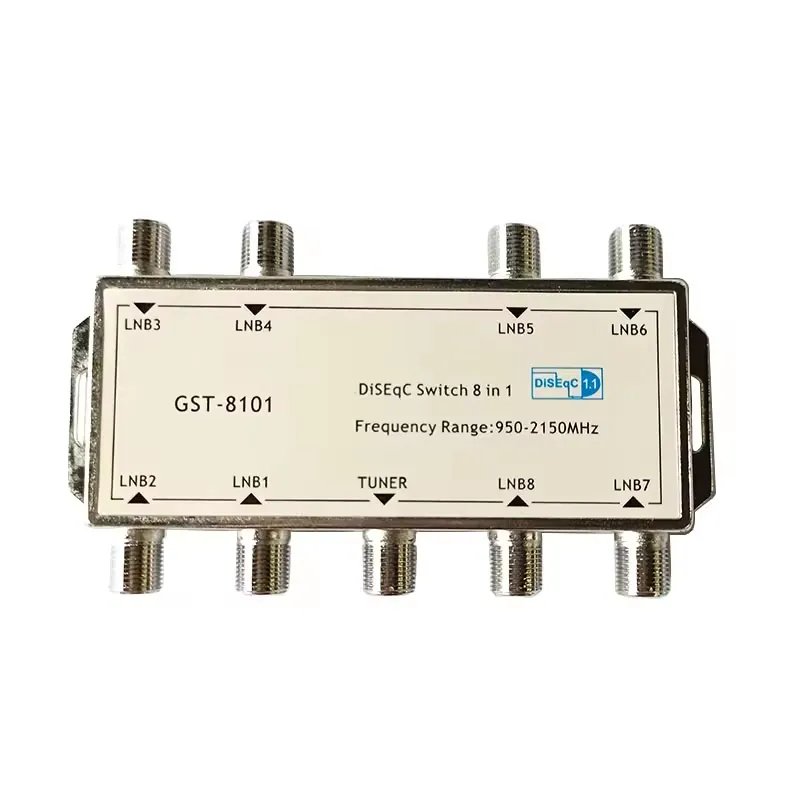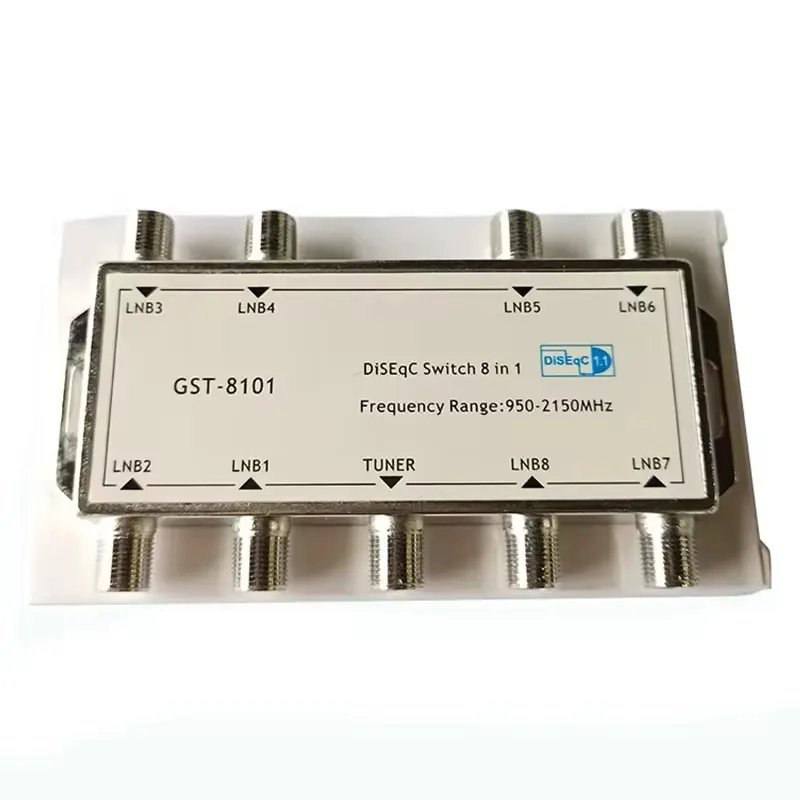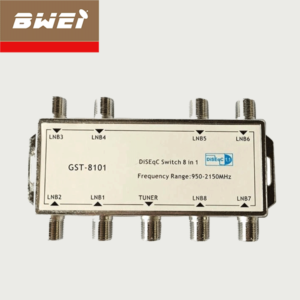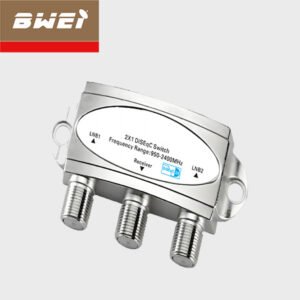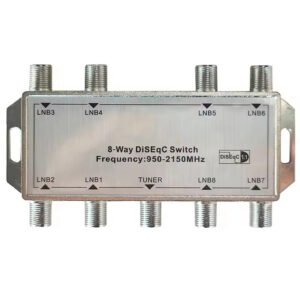
How to Use the 8-in, 1-out DiSEqC Switch for Multi-Satellite Antennas
The 8-in, 1-out DiSEqC switch is an essential component in the realm of multi-satellite antenna setups, enabling a single satellite receiver to interface with multiple satellite dishes or Low Noise Block downconverters (LNBs). DiSEqC, or Digital Satellite Equipment Control, is a communication protocol that facilitates the control of satellite equipment through commands sent via the coaxial cable. The 8-in, 1-out configuration specifically allows for the connection of up to eight different satellite sources to a single receiver, effectively streamlining the process of managing multiple satellite signals.
This switch serves a critical role by eliminating the need for multiple receivers or manual interventions when switching between different satellite signals. It provides a seamless experience where the receiver automatically selects the appropriate satellite feed based on the user’s input, ensuring a smooth and uninterrupted viewing experience. The 8-in, 1-out DiSEqC switch is especially beneficial in scenarios where space constraints or budget considerations make it impractical to install multiple satellite receivers.
Technical specifications of the 8-in, 1-out DiSEqC switch include its compatibility with DiSEqC 1.0, 1.1, and 1.2 protocols, which are commonly supported by modern satellite receivers. This ensures broad compatibility and ease of integration into existing setups. The switch is typically designed to work with a wide range of satellite dishes and LNB types, including both standard and universal LNBs, making it a versatile choice for various configurations.
When selecting an 8-in, 1-out DiSEqC switch, it is crucial to verify that both the satellite dishes and the receiver support DiSEqC commands. This ensures optimal performance and prevents compatibility issues. Additionally, considering factors such as signal loss and the quality of the coaxial cables used can further enhance the efficiency and reliability of the setup. By understanding the functionality and benefits of the 8-in, 1-out DiSEqC switch, users can maximize their multi-satellite antenna system, achieving greater flexibility and convenience in their satellite viewing experience.
Installing and configuring the 8-in, 1-out DiSEqC switch for a multi-satellite antenna system can be a straightforward process if approached methodically. To begin, gather all necessary tools and materials, including coaxial cables, F-type connectors, and appropriate mounting hardware. Ensure you also have the DiSEqC switch and satellite receiver readily accessible.
The first step involves connecting the satellite dishes or Low-Noise Block downconverters (LNBs) to the DiSEqC switch. Each satellite dish or LNB will correspond to one of the eight input ports on the switch. Carefully attach one end of a coaxial cable to the output port of each LNB, and the other end to an input port on the DiSEqC switch. Ensure that the connections are tight and secure to prevent signal loss or interference. Cable management is crucial; use cable ties or clips to organize the cables neatly, avoiding any sharp bends or kinks that could damage the cables.
Next, connect the DiSEqC switch to the satellite receiver. Attach one end of a coaxial cable to the output port of the DiSEqC switch and the other end to the satellite input port on the receiver. Again, confirm that the connections are secure and robust. Mount the DiSEqC switch in a location that is sheltered from extreme weather conditions, as this will help maintain the integrity of the connections and prolong the lifespan of the equipment.
Once the physical connections are in place, proceed to configure the satellite receiver. Access the receiver’s menu and navigate to the DiSEqC setup section. You will need to assign each LNB to the corresponding DiSEqC input port. This ensures that the receiver can correctly switch between the satellite signals. Save the settings and verify that the receiver can successfully switch between the different satellites.
If you encounter any issues, common troubleshooting steps include checking all cable connections for tightness, ensuring that the DiSEqC switch and receiver are both powered on, and confirming that the receiver’s software is up-to-date. Proper installation and configuration of the DiSEqC switch will result in optimal performance and high-quality signal reception from multiple satellites.
Other attributes
| Place of Origin | Anhui, China |
| Brand Name | BOTE |
| Model Number | BT-1000 |
| color | grey |
| high performance | yes |
| Insertion Loss | 3dB |
| Return Loss | 8dB |
| Impedance | 75Ω |
| Frequency range | 950 – 2400MHz |
| Control Signal | Position + Option |
| packing | standard carton for Switch |
| factory | Anhui bowei eletronics technology Co.,ltd |
| Certification | ce |
Packaging and delivery
| Selling Units: | Single item |
| Single package size: | 10X7X3 cm |
| Single gross weight: | 0.300 kg |
Lead time
| Quantity (pieces) | 1 – 50 | > 50 |
| Lead time (days) | 7 | To be negotiated |
